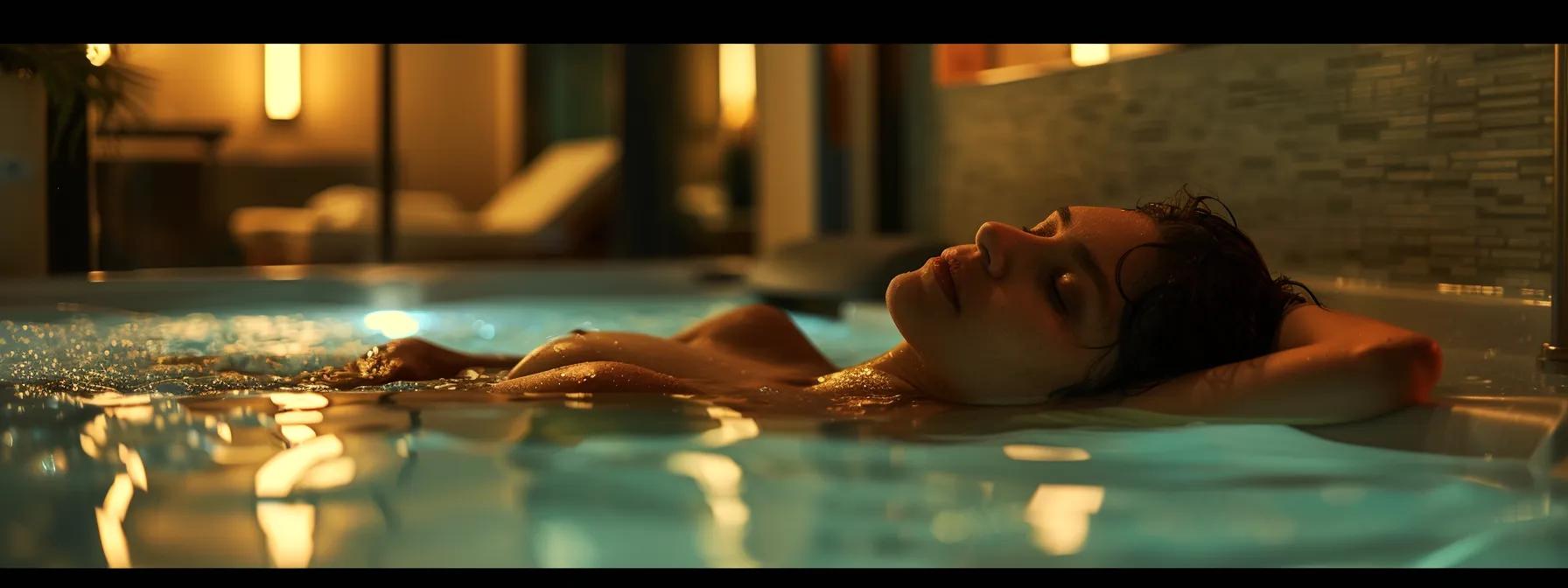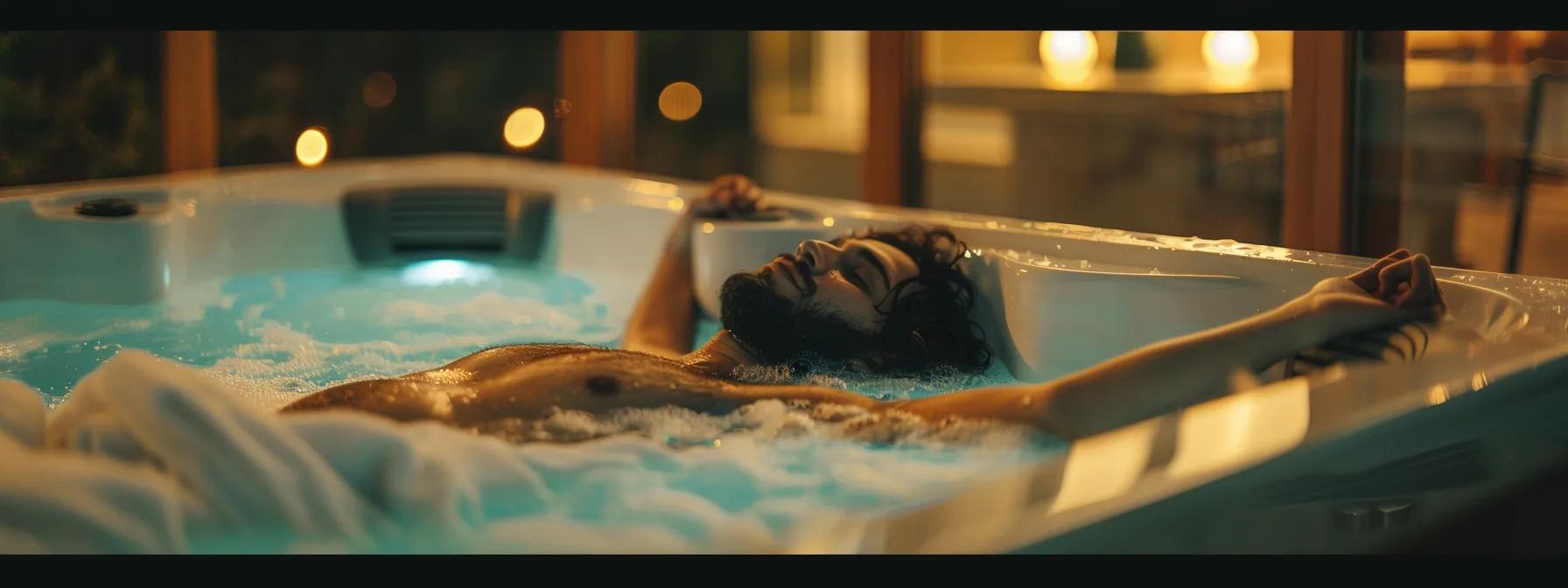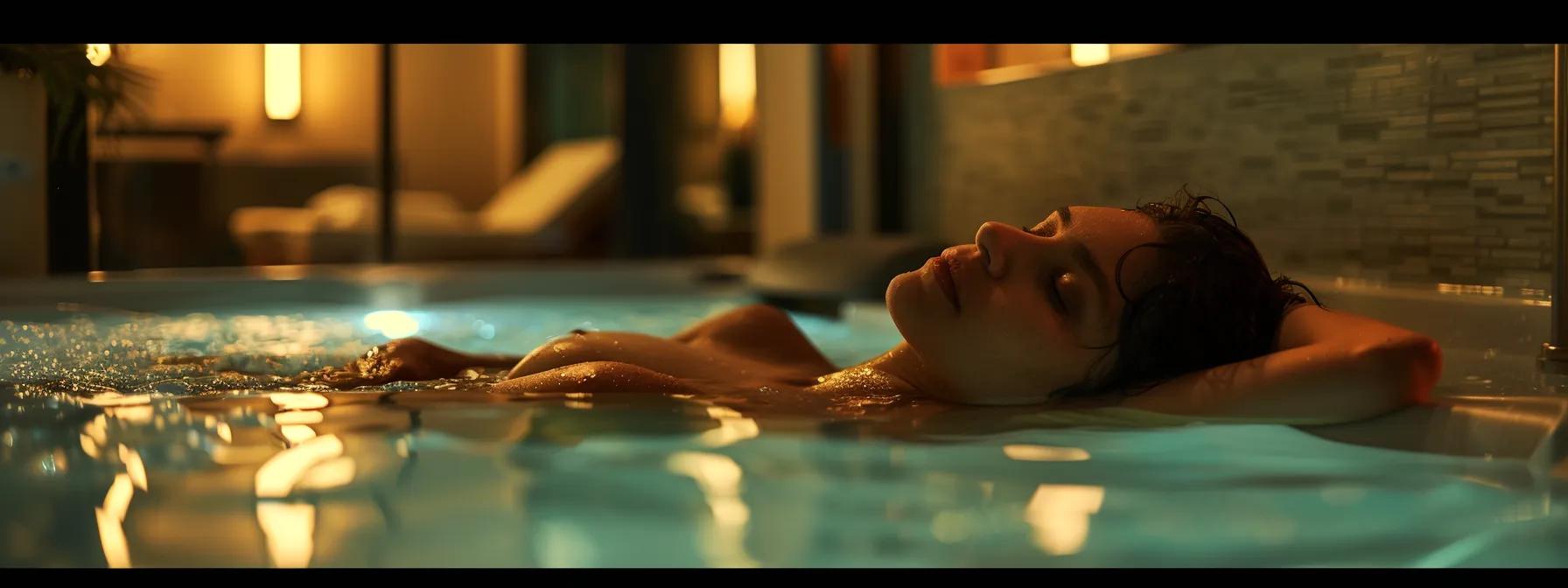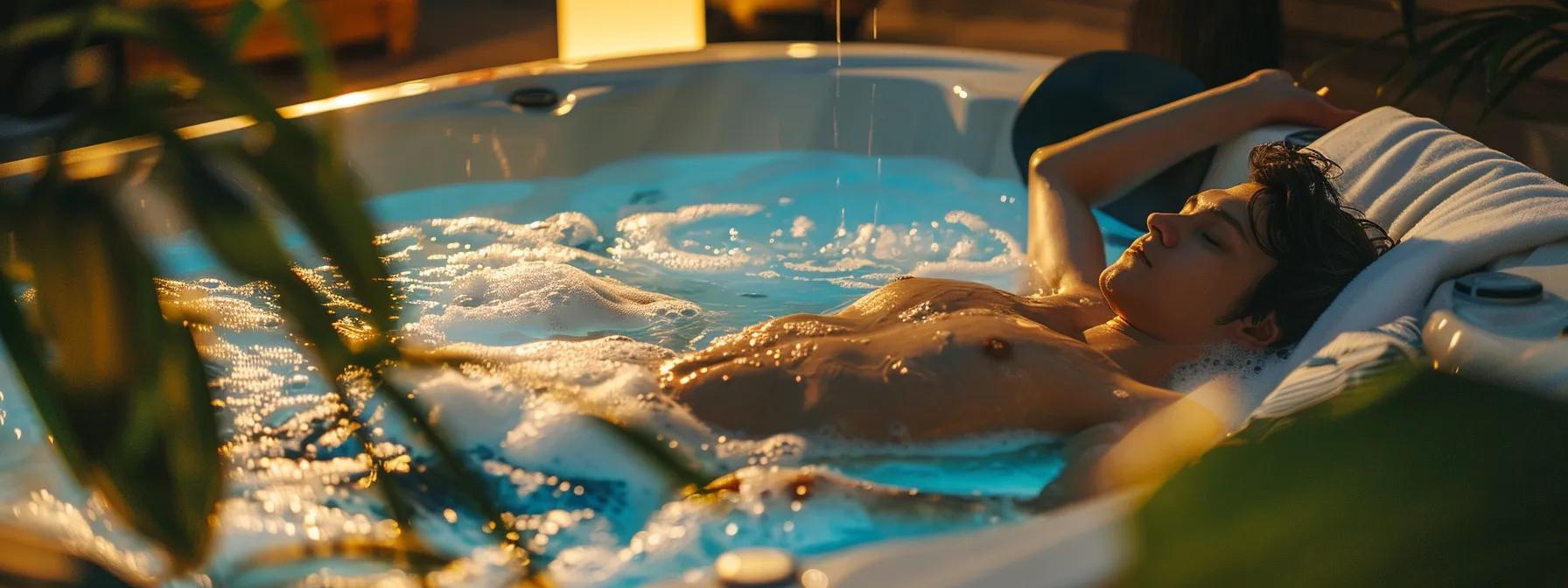Table of Contents - Danger Falling Asleep Hot Tub: 5 Safety Tips To Know
- Introduction
- The Danger of Falling Asleep in a Hot Tub – Quick Overview
- What Are the Main Risks of Falling Asleep in a Hot Tub?
- Why Do People Fall Asleep in Hot Tubs?
- How Can You Prevent Falling Asleep in a Hot Tub?
- What Should You Do if Someone Falls Asleep or Becomes Unresponsive in a Hot Tub?
- How Does Hot Tub Maintenance Impact Safety and Sleep Risks?
- What Are the Legal and Liability Considerations Related to Hot Tub Sleep Accidents?
- How Can Communities and Families Promote Hot Tub Safety Awareness?
- Frequently Asked Questions
- Final Thoughts
This blog post may contain affiliate links. As an Amazon Associate I earn from qualifying purchases.
The Danger of Falling Asleep in a Hot Tub: Risks, Causes, and Safety Tips
Introduction
Hot tubs are a luxurious way to relax after a long day but carry risks that many overlook. One of the most dangerous hazards is the danger of falling asleep in a hot tub. The heat, chemicals, and prolonged water exposure can lead to serious health issues, and some individuals may even experience Body ache after a hot tub. In this guide, I share essential insights on the risks, causes, and safety tips to ensure every soak is relaxing and safe. I cover topics such as hyperthermia, dehydration, chemical exposure (please see my post on do you sweat in a hot tub for more on this), drowning, and more. It is vital to understand these risks, especially the danger falling asleep hot tub, to avoid injuries or worse outcomes. My goal is to empower you with the knowledge and practical advice to enjoy a hot tub without compromising your health.
Understanding the danger falling asleep hot tub is essential for all users to maintain a safe relaxation experience. Ignoring the danger falling asleep hot tub can lead to serious health implications.
Transitioning into the main sections, let’s explore these hazards and learn how to minimize the risks.

The Danger of Falling Asleep in a Hot Tub – Quick Overview
By being aware of the danger falling asleep hot tub, you can take proactive measures while enjoying a soak.
Falling asleep in a hot tub exposes your body to dangerous conditions – from hyperthermia to chemical imbalances. Key hazards include:
- Hot tub hyperthermia
- Chemical exposure
- Drowning
- Dehydration
- Cardiovascular stress
- Skin irritation
- Body aches
- Sleep deprivation
Each risk deserves careful consideration to ensure you remain safe while relaxing.
The danger falling asleep hot tub can be mitigated by understanding your limits and ensuring safety practices are followed.
Always keep in mind the danger falling asleep hot tub, especially if you’re feeling tired or relaxed.
Hot Tub Hyperthermia
The Danger Falling Asleep Hot Tub: Understanding the Risks
When your core temperature rises dangerously due to hot water, your body may experience heat exhaustion or heat stroke. Normally, increased blood flow and sweating help cool you, but falling asleep may impair this process. Symptoms can include nausea, dizziness, headache, and even loss of consciousness—especially risky for those with heart issues or poor temperature regulation. Alcohol or sedatives can worsen these effects.
Hot Tub Chemical Exposure
Disinfectants like chlorine or bromine are necessary to keep hot tubs safe, but excessive exposure or improper balance can irritate skin and the respiratory system. Heat intensifies chemical reactions, and prolonged contact while asleep increases the risk of allergic reactions or burns. Regular testing and maintenance help keep these chemicals within safe limits.
Being aware of the danger falling asleep hot tub can help prevent unexpected incidents.
Always consider the danger falling asleep hot tub before you begin your relaxation routine.
Those who frequently use hot tubs must recognise the danger falling asleep hot tub poses to their wellbeing.
Hot Tub Drowning
Understanding the danger falling asleep hot tub should be part of every user’s safety education.
Drowning is a serious risk if muscle coordination diminishes while you sleep. Relaxation and impaired responsiveness can make it difficult to exit the tub if an emergency occurs. Even a few seconds of unresponsiveness can be catastrophic, particularly when safety rails or steps are not used properly.
Awareness of the danger falling asleep hot tub is crucial for those who seek to enjoy their relaxation fully.
Hot Tub Dehydration
The heat in a hot tub causes sweating and loss of water and electrolytes. Without adequate hydration, you may experience dizziness, weakness, and impaired cognitive function. Falling asleep prevents timely recognition of dehydration symptoms and can lead to more serious issues for the kidneys and heart.
Cardiovascular Health
Hot water exposure increases heart rate and blood pressure. Falling asleep may hinder your body’s ability to regulate these changes, risking arrhythmias or even a heart attack. Individuals with heart conditions must be especially cautious.
Skin Irritation
Extended exposure to hot, chemically balanced water can dry and irritate the skin. Staying in a hot tub while asleep can lead to conditions such as folliculitis or dermatitis due to constant contact and loss of natural oils.
It is everyone’s responsibility to recognise the danger falling asleep hot tub during use.
Each hot tub user should consider the danger falling asleep hot tub when enjoying their relaxation time.
Body Aches
Prolonged heat can overly relax muscles, causing fatigue and joint aches. Although initially therapeutic, over-relaxation in a hot tub may lead to stiffness and decreased physical performance after waking.
Incorporating knowledge about the danger falling asleep hot tub into routines can enhance safety.
What Are the Main Risks of Falling Asleep in a Hot Tub?
Always be mindful of the danger falling asleep hot tub to ensure a safe experience for all.
Losing consciousness in a hot tub can quickly escalate from discomfort to a life-threatening situation.

How Does Heat Affect Your Body While Sleeping in a Hot Tub?
The hot water forces your body to work harder to maintain a stable temperature. While vasodilation initially helps cool you, in a hot tub this mechanism can become overtaxed, leading to hyperthermia. As body temperature rises, you might experience a rapid heart rate, confusion, or dizziness – a dangerous scenario for those with compromised thermoregulation.
What Are the Signs of Heat Exhaustion and Heat Stroke in Hot Tub Users?
Early symptoms of heat exhaustion include heavy sweating, rapid heartbeat, weakness, and nausea. If these progress to heat stroke, confusion, very high body temperature, and loss of consciousness may occur. Recognizing these signs early can prevent severe outcomes.
Can Falling Asleep in a Hot Tub Lead to Drowning?
Yes. When asleep, you lose the motor skills needed to react to changes, and the natural buoyancy of the water can mask danger. Even brief periods of unresponsiveness can lead to insufficient oxygen, especially if influenced by medications or alcohol.
Keep the danger falling asleep hot tub in mind for a safer and more enjoyable experience.
Why Do People Fall Asleep in Hot Tubs?
The relaxing environment of a hot tub – with its warm water, buoyancy, and gentle jet action – can promote sleep. The ambient heat releases endorphins and melatonin, lowering stress and signaling that it’s time for sleep.

How Does Hot Water Promote Relaxation and Sleepiness?
Hot water increases blood circulation and relaxes muscles, which can reduce tension and signal the brain to sleep by dropping core temperature after exiting the tub. This pleasant process, however, can become risky if you drift off unsupervised.
What Role Do Alcohol and Medications Play in Hot Tub Sleep Risks?
Alcohol and certain medications act as depressants that reduce awareness and motor skills. They may accelerate the onset of sleep while also interfering with crucial reflexes needed to exit the tub safely.
Are Certain Health Conditions More Vulnerable to Falling Asleep in Hot Tubs?
People with cardiovascular issues, respiratory problems, diabetes, or neurological conditions are at higher risk. Older adults, in particular, may have diminished muscle tone and thermoregulation, making them more prone to accidents.
How Can You Prevent Falling Asleep in a Hot Tub?
Numerous effective strategies exist to prevent unintentional sleep in a hot tub:
What Are the Best Practices for Safe Hot Tub Use?
• Limit soaks to 15–20 minutes at higher temperatures. • Avoid alcohol before or during use. • Use a timer or alarm to remind you to exit. • Stay hydrated before, during, and after your soak. • Consider setting the temperature around 100°F (37.8°C). • Periodically move or stretch to stimulate circulation.
How Can You Monitor Hot Tub Temperature to Avoid Overheating?
Keep an eye on digital thermometers built into modern hot tubs or use an external thermometer. Routine checks prevent accidental overheating, and using a cover with insulating properties can help maintain safe temperatures.
What Safety Devices and Features Help Prevent Accidents?
Modern hot tubs include features such as automatic shut-off systems, safety locks, water level sensors, and temperature alarms. While these devices enhance safety, they do not replace the importance of personal vigilance.
What Should You Do if Someone Falls Asleep or Becomes Unresponsive in a Hot Tub?
Quick action is essential if someone becomes unresponsive:
How Can You Safely Remove Someone From a Hot Tub?
Carefully remove the person using a ladder or steps. If they are heavy or having difficulty breathing, call for help immediately rather than attempting to lift them on your own. Ensure their head remains above water at all times.
When Should You Call Emergency Services?
Call emergency services immediately if the person shows signs of severe heat stroke, hypothermia, or respiratory distress. Provide clear details about the situation, including the hot tub’s temperature and the duration of exposure.
Falling asleep in a hot tub is risky; understanding the danger falling asleep hot tub can save lives.
What Are the Immediate First Aid Steps for Heat-Related Illness?
Check the person’s airway, breathing, and circulation. Move them to a cooler area, remove wet clothing, and apply cool compresses to gradually lower body temperature. Offer small sips of water if they are conscious, and be prepared to perform CPR if necessary.
How Does Hot Tub Maintenance Impact Safety and Sleep Risks?
Regular maintenance is critical for both safety and comfort:
For those who value their health, recognising the danger falling asleep hot tub is of utmost importance.
Why Is Water Chemistry Important for User Health and Alertness?
Proper water chemistry prevents irritation, respiratory problems, and discomfort that can lead to drowsiness. Maintaining balanced chlorine, bromine, and pH levels with regular testing is essential.
Knowledge of the danger falling asleep hot tub can help users maintain a high level of awareness.
How Can Electrical Safety Prevent Accidents in Hot Tubs?
Ensure all electrical systems – used to control heating, jets, and lighting – are regularly inspected. Certified technicians should check wiring and waterproof connectors, and ground fault circuit interrupters (GFCIs) add extra protection.
By focusing on the danger falling asleep hot tub, we can promote safer practices for everyone.
What Regular Checks Should Hot Tub Owners Perform?
Owners should conduct daily checks of water clarity and temperature, perform weekly maintenance on filters and chemicals, and complete a monthly inspection of safety devices. A professional check-up once a year is also recommended.
What Are the Legal and Liability Considerations Related to Hot Tub Sleep Accidents?
Legal issues may arise if someone is injured due to falling asleep in a hot tub:
Who Is Responsible for Injuries Caused by Falling Asleep in a Hot Tub?
Liability can fall on hot tub owners, manufacturers, or service providers depending on safety features, maintenance, and clear warning labels. Proper documentation and adherence to safety guidelines are essential in mitigating legal risk.
Remembering the danger falling asleep hot tub is fundamental to enjoying a safe experience.
Discussing the danger falling asleep hot tub can empower others to make safe choices.
Are There Safety Standards and Guidelines for Hot Tub Manufacturers?
Manufacturers must comply with safety standards set by organizations such as the Association of Pool & Spa Professionals (APSP) and Underwriters Laboratories (UL). These standards cover electrical safety, heating, and chemical balance. Certification by relevant authorities is a key indicator of safety.
It is vital to be aware of the danger falling asleep hot tub and its potential consequences.
Always consider the danger falling asleep hot tub when planning your relaxation routine.
Recognising the danger falling asleep hot tub is a key step in ensuring personal safety.
Prioritising knowledge of the danger falling asleep hot tub can significantly reduce risk.
Participating in discussions about the danger falling asleep hot tub can aid in spreading awareness.
Educating others on the danger falling asleep hot tub is a responsible action for all hot tub users.
How Can Communities and Families Promote Hot Tub Safety Awareness?
Promoting hot tub safety is a community effort:
What Resources Are Available for Hot Tub Safety Education?
Local fire departments, health inspectors, and certified technicians offer safety workshops. Manufacturer websites and reputable online platforms provide detailed manuals and tutorials on safe hot tub use and maintenance.
How Can You Encourage Safe Hot Tub Habits Among Users?
Set personal boundaries such as using timers, avoiding alcohol, and always having another person nearby. Creating a safety checklist and hosting periodic family sessions on first aid can foster accountability.
What Role Do Certified Hot Tub Service Providers Play in Safety?
Certified service providers ensure your hot tub is maintained to high safety standards through regular inspections and repairs. Their expertise in balancing water chemistry and checking electrical systems minimizes accident risks.
Frequently Asked Questions
Q: What are the primary risks of falling asleep in a hot tub? A: Primary risks include hyperthermia, chemical exposure, dehydration, cardiovascular stress, drowning, skin irritation, and muscle fatigue. Elevated temperatures and alcohol consumption can worsen these risks.
Q: How can I effectively prevent falling asleep in my hot tub? A: Limit your soak to 15–20 minutes, avoid alcohol, use a timer, stay well-hydrated, and keep the water at a moderate temperature. Regular movement while soaking also helps maintain alertness.
Q: Are there any legal consequences for hot tub owners if accidents occur? A: Yes, negligence in maintenance or failure to include proper safety features can result in liability. Clear warnings, proper documentation, and adherence to safety standards are vital to mitigate legal risks.
Q: What should I do if someone becomes unresponsive in a hot tub? A: Immediately remove them from the water safely, call emergency services, and follow first aid protocols (check airway, breathing, and circulation). Fast action is critical to prevent further harm.
Q: How often should I have my hot tub checked for safety? A: Daily checks for water clarity and temperature, weekly maintenance for chemical balance and filters, and monthly inspections of safety devices are recommended. A professional check-up annually is also advisable.
Q: Can hot tub use lead to long-term health issues? A: Improper use can lead to chronic dehydration, skin problems, or cardiovascular strain. Following usage guidelines and maintaining proper water chemistry minimizes these risks.
Q: Do safety features in modern hot tubs really work? A: Yes, features like automatic shut-off systems, temperature alarms, water level sensors, and GFCIs help detect hazards early. However, they must be combined with personal vigilance and regular maintenance.
Final Thoughts
Hot tubs offer a luxurious way to relax, but it is critical to recognize and mitigate the risks of falling asleep in them. By understanding hazards like hyperthermia, dehydration, drowning, and skin irritation, you can take proactive steps to enjoy your hot tub safely. Prioritize proper maintenance, adopt good safety habits, and use recommended safety devices to reduce your risk. Let this guide serve as a reminder to always balance relaxation with safety while enjoying your hot tub.
Article by Dave King
Hey, I’m Dave. I started this blog because I’m all about hot tubs. What began as a backyard project turned into a real passion. Now I share tips, reviews, and everything I’ve learned to help others enjoy the hot tub life, too. Simple as that.



